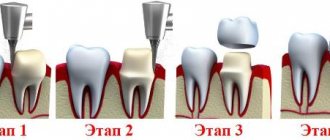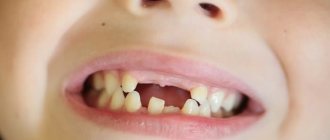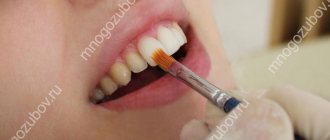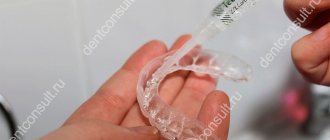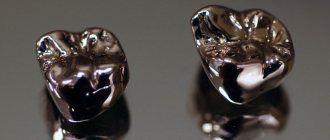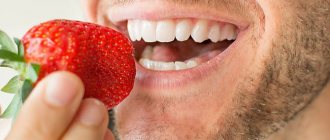What could be better than a dazzling white smile? For citizens whose activities involve constant communication, an impeccable smile is a must. And to make their teeth look snow-white, many people undergo whitening procedures. But is it possible to do teeth whitening for children? Do not forget that dental plaque contains many microbes that lead to inflammatory processes.
Many mothers and fathers do not attach much importance to this, believing that yellowing of teeth cannot harm the child in any way. Some parents believe that baby teeth are temporary and therefore do not require significant care. This is not true. If you do not start treating yellowed teeth in a timely manner, quite serious problems may appear in the future.
Teeth whitening in childhood – how safe and justified?
When a child’s tooth enamel begins to darken, this may indicate insufficient oral hygiene or the development of a dental disease. But teeth can change color for other reasons beyond our control, for example, as a result of genetic predisposition. Due to such circumstances, the child may develop psychological complexes and self-doubt. Therefore, some parents have a completely reasonable question: is it possible to whiten children’s teeth and how safe is it? You will find answers to these and other questions later in this article.
Is it possible to whiten teeth as a child?
Composition of whitening gels
For both professional and non-professional whitening, special gels with hydrogen or urea are used. It may also contain amorphous calcium phosphate, potassium nitrate or fluorine. These elements give teeth brightness and shine and heal damaged enamel. Some gels contain components that have a soothing effect on gums and teeth.
Why does a child's teeth darken?
Tooth enamel can darken for various reasons. At the same time, it can noticeably turn yellow or even turn light brown. Of course, this state of affairs can negatively affect not only oral health, but also the psychological state of the child. So why does enamel change color? Here are some common reasons for this unpleasant phenomenon:
- uncontrolled consumption of sweets and fast carbohydrates: foods high in sugar are the most common cause of the development of caries in childhood1. They contribute to the formation of a bacterial film on the surface of the enamel, which very quickly turns into hard dental deposits. All this leads to its inevitable darkening,
Caries leads to discoloration of teeth - constant consumption of food with pigments: this includes coloring drinks such as tea, coffee, sweet soda with dyes. The latter not only contribute to a change in the color of the enamel, but also lead to the gradual destruction of dental tissues, since the composition of such liquids contains too many sugars and acids,
- genetics: according to experts, quite often dark enamel becomes a consequence of genetic predisposition, and then dealing with the problem becomes much more difficult,
- tooth injury: the presence of microcracks, scratches, chips, carious plaque and dental deposits on the enamel - all these factors have a direct impact on the condition and, accordingly, the color of the enamel.
“When my child’s teeth became very dark, I immediately decided that he wasn’t brushing. I started urging him to brush his teeth in front of me every morning and evening before bed. I excluded sugar and flour from my diet, of course, as much as possible. But nothing helped. And only at the dentist’s appointment it turned out that it was all a matter of genetics. The teeth themselves are very susceptible to caries, and even dark. We were booked in for professional cleaning, but were told to hold off on bleaching. Such procedures are not performed on children, so they will have to wait until they reach adulthood.”
Alyonka_33, Omsk, from correspondence on the woman.ru forum
Keep in mind that if there is even the slightest damage to tooth enamel, it is prohibited to use any whitening methods, especially at home. Otherwise, the aggressive effects of whitening agents may even lead to complete destruction of the outer protective layer of the teeth. Therefore, before carrying out such a procedure, it is imperative to consult with a specialist.
Important! As for children, it is generally not allowed to use any methods of lightening enamel without the permission of the dentist. Therefore, the answer to the question “is it possible to whiten teeth in childhood” will, on the one hand, be categorical (the use of chemicals is prohibited), but, on the other hand, it will be positive – there is a professional cleaning method.
How long does the effect last and how often should the procedure be done?
The resulting effect lasts for 2-7 years. The duration of the result depends on the type of whitening chosen, the individual characteristics of the person and his lifestyle. Teeth whitening can be repeated at least after 1-2 years.
To ensure that the whitening effect lasts as long as possible, you must follow these recommendations:
- maintain oral hygiene;
- to refuse from bad habits;
- limit the consumption of coloring foods and drinks (you should completely avoid them in the first 7 days);
- Visit a hygienist every six months for professional oral cleaning.
Professional hygiene complex - an option on how to make children's tooth enamel lighter
So, is it possible to whiten a child’s teeth and how to do it without damaging the fragile enamel? In fact, what we usually mean by bleaching, that is, the use of aggressive chemicals, is contraindicated in children. This raises a logical question: at what age can one begin to carry out such procedures? In dental centers, this type of service is offered to patients only from 15-16 years of age, and in some situations even from 18 years of age. However, there is another, alternative option - regular, but very high-quality teeth cleaning. Let's look at this method.
So, in addition to classic whitening (photo, chemical or laser), modern dentistry offers the opportunity to steal electrical energy to clean the enamel of plaque and plaque in a gentle way. Using hardware techniques, you can lighten your teeth a couple of shades, but if the cause of dark enamel is genetics, this method is unlikely to make it noticeably lighter. On the other hand, this is not just effective, but mandatory prevention of caries development, which is carried out for children starting from 7-8 years old and even younger. When a very young patient finds himself in the dental chair, he may be offered gentle manual cleaning.
In childhood, only gentle brushing of teeth is allowed.
Cleaning using the Air Flow device has become widespread today. In this case, we are not talking about an aggressive chemical effect, but about high-quality cleansing of the enamel from bacteria and accumulations of food debris. The device works as follows: compressed air is supplied to the tip under high pressure along with baking soda. Treatment of the surface of the teeth with a powerful jet allows you to clean even the most inaccessible places. In order to give the effect of freshness, essential oil or lemon essence is often added to the mixture.
On a note! Ultrasonic cleaning before the age of 5-7 years is also prohibited. Air Flo cannot be used if the child has a hypersensitivity to citrus fruits or mint - there is a high risk of developing an allergic reaction.
What is laser vision correction?
Note! There are several methods of laser correction, and each of them has its own indications and allows you to eliminate refractive errors of varying degrees.
Today this is one of the most effective ways to quickly eliminate such a problem, especially if it is steadily progressing.
All existing based on one principle - the treatment of corneal tissue , which is divided into several stages :
Why classic whitening is not performed in childhood
So what’s wrong with classic professional whitening and why aren’t similar procedures performed in children? The thing is that a child’s tooth enamel is characterized by increased fragility and susceptibility to any kind of external irritants. And traditional methods of lightening it precisely involve a rather aggressive effect on the surface of the teeth. Here are some good reasons that do not allow you to whiten children's enamel even in the dentist's office:
- thinning of the enamel: as a result of exposure to chemicals, ultraviolet radiation or laser, the density of the enamel is noticeably reduced and its structure is disrupted. When it comes to a child, the protective layer of the teeth may not be able to withstand it at all. As a result, the risk of developing caries and other dental diseases greatly increases,
- demineralization: during the procedure, rapid destruction of minerals is observed, and this, in turn, greatly weakens the teeth. Even adult patients after whitening are recommended to undergo a remineralization procedure,
- increased enamel sensitivity: teeth begin to react sharply to hot and cold, as well as to acidic foods, and this is an obvious drawback of professional whitening. The enamel becomes much thinner, which significantly increases the likelihood of problems with teeth and enamel pigmentation in particular.
- risk of burns: using ultraviolet light to lighten tooth enamel can cause a serious burn on the mucous membrane. At the same time, dental tissues also suffer greatly from heating.
Aggressive whitening can lead to thinning and demineralization of the enamel.
Obviously, the only option to make the enamel of children's teeth a little lighter is to schedule a professional cleaning at the dentist's office. If we are talking about a child, then this is the safest and preferable option, which allows you to make the enamel a couple of tones lighter. And remember: independent attempts to lighten children’s teeth using folk remedies are fraught with serious problems, including complete destruction of the enamel. This kind of procedure is best left to professionals.
- According to WHO research results.
The essence of the in-office whitening procedure
The dentist performs the following actions:
- applies protection to the oral mucosa;
- applies the whitening agent to the frontal area of the teeth;
- when photobleaching, I expose the gel to light from a halogen or ultraviolet lamp;
- after a certain time (on average 15 minutes), the drug is washed off with plenty of water;
- At the end of the procedure, the teeth are coated with a special gel that reduces their sensitivity.
Good to know. Along with the darkened areas of the teeth, useful minerals are removed. The lack of substances can be compensated for by remineralization of teeth.
Selection of methodology
When choosing a whitening method, the patient’s wishes are undoubtedly taken into account, but are not decisive. The final conclusion is made by your attending physician - our specialist, who, based on the examination and identified contraindications, will determine the best whitening method for you.
In this regard, general recommendations for choosing a whitening method boil down to the following:
- the office method is preferable for those patients who want to get quick and effective results;
- The home whitening method is suitable for people with increased enamel sensitivity and who are not limited in time.
Important details you need to know
Not all potential patients are aware that there are certain subtleties in the teeth whitening procedure, which are as follows:
- This procedure can only change the natural color of the teeth. This means that existing restorations or dentures will not change color and will require replacement after the whitening procedure.
- The final color takes about 14 days on average to form. Only after this period has passed can we begin to replace restorations, if the patient has any.
- Dental units that have darkened as a result of pulp removal, the so-called “dead” teeth, can only be lightened by intracoronal bleaching, which is carried out before the main procedure.
- The final color of the enamel is individual for each patient and depends on the initial shade of his teeth. Thus, yellowish teeth whiten better than gray-brown ones, and fangs are worse than incisors.
We remind Kaliningrad residents that crowns or fillings can be replaced, if necessary, in our clinic. To do this, you need to make an appointment with an orthopedic dentist.
Advantages and disadvantages of Zoom-4
Advantages of Zoom-4 whitening:
- Efficiency (8 tones in 45 minutes (excluding preparation))
- No anesthesia required
- Long-term effect (up to 5 years)
- Gentle on enamel
- High efficiency (even with fluorosis)
- No risk of gum burns
Minuses:
- Many contraindications
- Possibility of increasing tooth sensitivity in people with a vulnerable enamel layer
- Impossibility of giving whiteness to old fillings and dentures
- High price

